Simulation video games are a diverse super-category of video games, generally designed to closely simulate real world activities. A simulation game attempts to copy various activities from real life in the form of a game for various purposes such as training, analysis, prediction, or entertainment. Usually there are no strictly defined goals in the game, and the player is allowed to control a character or environment freely. Well-known examples are war games, business games, and role play simulation. From three basic types of strategic, planning, and learning exercises: games, simulations, and case studies, a number of hybrids may be considered, including simulation games that are used as case studies. Comparisons of the merits of simulation games versus other teaching techniques have been carried out by many researchers and a number of comprehensive reviews have been published.

Falcon 4.0 is a combat flight simulation video game developed by MicroProse and published by Hasbro Interactive in 1998. The game is based around a realistic simulation of the Block 50/52 F-16 Fighting Falcon jet fighter in a full-scale modern war set in the Korean Peninsula.
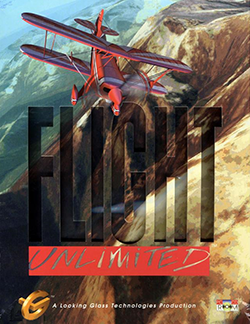
Flight Unlimited is a 1995 aerobatic flight simulator video game developed and published by LookingGlass Technologies. It allows players to pilot reproductions of real-world aircraft and to perform aerobatic maneuvers. They may fly freely, race through floating rings against a timer or take lessons from a virtual flight instructor. The instructor teaches basic and advanced techniques, ranging from rudder turns to maneuvers such as the tailslide, Lomcovák and Immelmann turn.

Red Baron II is a video game for the PC, developed by Dynamix and published by Sierra On-Line. It is the follow-up to the flight simulation Red Baron, released in 1990. Red Baron II was released in December 1997. A patch was released in 1998 that added support for 3D acceleration and renamed the game to Red Baron 3D. Red Baron 3D was also released as a retail product.
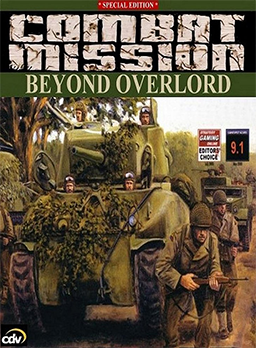
Combat Mission: Beyond Overlord is a 2000 computer wargame developed and published by Big Time Software. It is a simulation of tactical land battles in World War II.

Tachyon: The Fringe is a Space combat simulation video game developed and published in 2000 by Novalogic. It features the voice acting of Bruce Campbell as main character Jake Logan in a 3-D space simulator. Tachyon was developed by Randy Casey, who had previously written two other titles for Novalogic: F-22 Lightning II and F-22 Raptor.

Grand Prix 2, released in North America as "Grand Prix II", is a racing simulator released by MicroProse in 1996. It is a sequel to Formula One Grand Prix. It was made under an official FIA license that featured the Formula One 1994 season, with all of the circuits, teams, drivers and cars. The cars were painted with liveries reflecting the races that did not allow tobacco and alcohol sponsors.

AH-64D Longbow is a realistic combat flight simulator of the AH-64D Apache Longbow attack helicopter. Released on June 3, 1996, for the PC, this simulation was developed at Origin Systems. AH-64D Longbow was the second simulator released under the Jane's Combat Simulators line from Electronic Arts.

European Air War is a combat flight simulator developed and published by MicroProse and published for Microsoft Windows in 1998. It is a sequel to 1942: The Pacific Air War. It simulates the Battle of Britain, and the Allied Air offensives in Western Europe during World War II in 1943–1945.
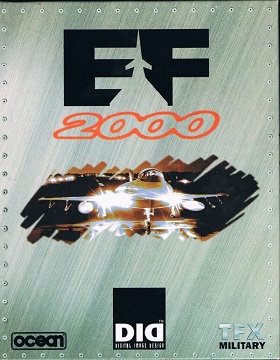
EF2000 is a combat flight simulator video game developed by Digital Image Design (DID) and published by Ocean Software in 1995 for the PC DOS. It is the sequel to DID's earlier software title, TFX. An expansion pack, EF 2000: TACTCOM, was released in 1996. A compilation, EF 2000: Evolution, that included the main game and the expansion was released in 1996. An updated version, Super EF2000, was released exclusively for Windows 95 in 1996 in Europe. In 1997, a compilation titled EF2000 V2.0 was released in North America that included the original DOS versions of EF2000 and TACTCOM and also the Windows exclusive Super EF2000. In June 1997, the graphics were boosted when DID released the "Graphics+" patch, which added Rendition Vérité hardware support and Glide API for 3dfx graphics card support to EF2000.

Hind is a combat flight simulation game released by Digital Integration in 1996 for MS-DOS compatible operating systems and Microsoft Windows. It is the successor to Apache.
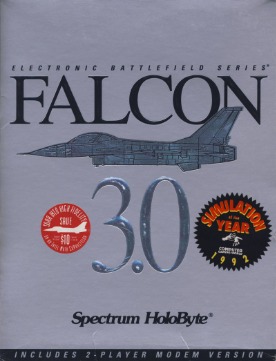
Falcon 3.0 is a combat flight simulator video game developed by Sphere Inc. and published by Spectrum HoloByte in 1991 as third official main entry in the Falcon series of the F-16 Fighting Falcon simulators.

MiG Alley is a combat flight simulation game, developed by Rowan Software for PCs with Windows, and was published by Empire Interactive in 1999.

Jane's World War II Fighters is the 1998 combat flight simulation video game. Set in the European theatre of operations during World War II, it is part of the Jane's Combat Simulations franchise. The game was considered a commercial failure, and contributed to the end of the Jane's Combat Simulations line.

Jane's F-15, also known as simply F-15, is a combat flight simulator video game developed and released by Electronic Arts in 1998 for the PC. It models the McDonnell Douglas F-15E Strike Eagle. EA's 2000 Jane's F/A-18 used an improved version of F-15's game engine.
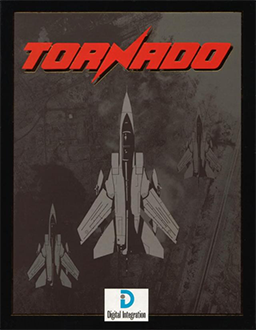
Tornado is a combat flight simulator video game by Digital Integration that models the Panavia Tornado. It was released in 1993 for DOS and Amiga. Tornado is one of the first flight simulations to offer head-to-head online dogfights.

Close Combat is a 1996 real-time computer wargame developed by Atomic Games and published by Microsoft. Set during World War II, it simulates the conflict between the United States' 29th Infantry Division and Germany's 352nd Infantry Division after the Invasion of Normandy. The player controls an artificially intelligent army whose behavior is dictated by psychological models: each soldier makes decisions based on the circumstances of the battlefield and can disobey the player's orders.

Longbow 2 is the sequel to Jane's AH-64D Longbow from Jane's Combat Simulations. The game was developed by Origin Systems with executive producer Andy Hollis on board, and released by Electronic Arts on November 13, 1997.

Jane's ATF: Advanced Tactical Fighters is a 1996 combat flight simulator developed and published by Electronic Arts for DOS. It is the first entry in the Jane's Combat Simulations franchise. An expansion pack, NATO Fighters, was released in 1996, and a compilation package for Microsoft Windows was released in 1997 titled Advanced Tactical Fighters Gold.
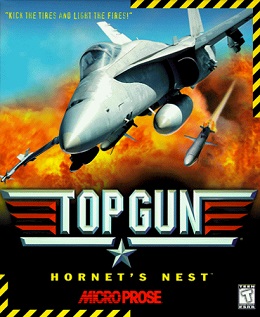
Top Gun: Hornet's Nest is a 1998 combat flight simulation game developed by Zipper Interactive and published by MicroProse for Microsoft Windows. It is loosely based on the 1986 film Top Gun, and is a sequel to the 1996 game Top Gun: Fire at Will. The game was criticized for its lack of realism and its flight physics.



















